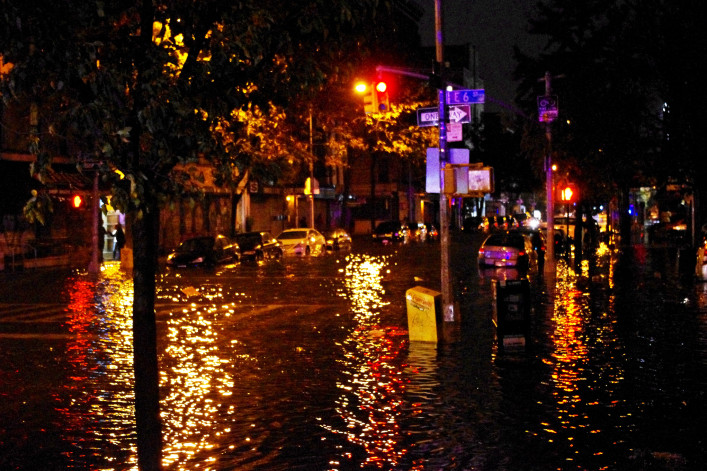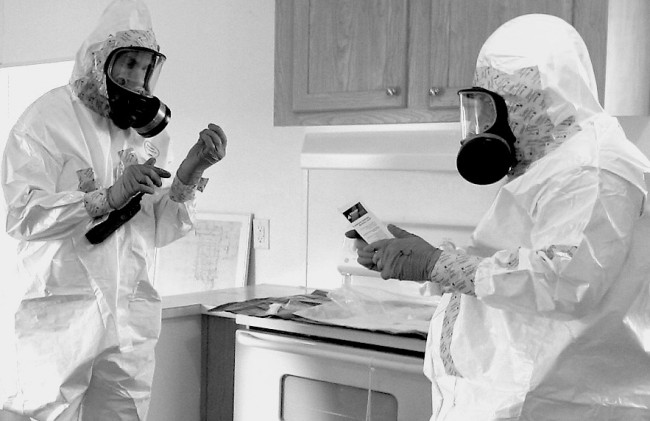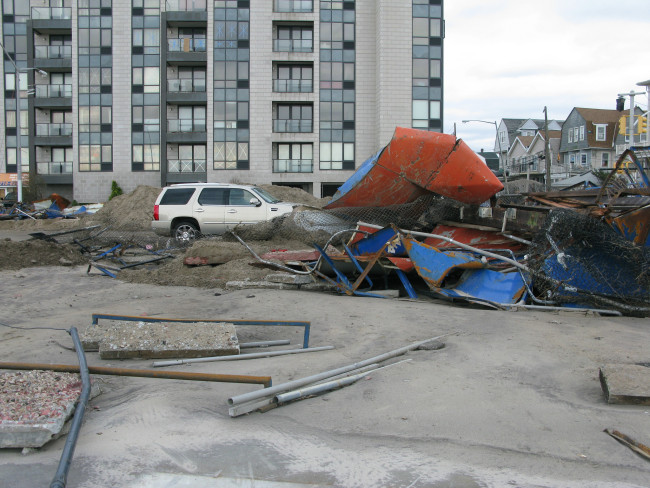5 years after Sandy, what's been done in NYC, and what still needs doing
Yesterday marked the fifth-year anniversary of Superstorm Sandy, the storm that left neighborhoods throughout the five boroughs flooded, mass transit inoperable, and the visually striking sight of lower Manhattan in darkness.
Ultimately, the city would sustain $19 billion worth of damage.
A lot of money flowed in via federal grants for recovery, and investments continue to surge into development projects in some of the areas hardest hit by the storm. Here’s a snapshot of what’s been done, what hasn’t, and what the city is doing to prep for the next Big One.
Recovery money has been allocated, but in some places recovery is slow to come
Congress passed the Hurricane Sandy Federal Relief Bill in January of 2016, allocating more than $50 billion for recovery for New York, New Jersey and Connecticut, with New York City receiving $13 billion, the largest share of the funds.
The New York City Housing Authority was granted $2.9 billion to repair and retrofit more than 250 buildings inside 30 public housing developments. Some of the hardest hit, the Red Hook Houses, received more than $430 million, but rehab progress has been slow. Residents have complained of mold and mildew smells and inconsistent heat and hot water provided by temporary boilers. 41 temporary hot water boilers are still in use at 16 public housing developments, according to NY1. NYCHA now projects that some developments will not be fully repaired and upgraded until 2021.
On the bright side, a $63 million roof repair project at the Red Hook Houses is underway, as of September.
As evidenced by the Sandy5 March held this past Saturday, many New Yorkers are still unimpressed with the government response, both in terms of rebuilding, and addressing larger issues of preparedness for climate change.
In the interest of transparency, the city launched the Sandy Funding Tracker, where people can track the latest developments and spending of the city’s rebuilding and resiliency efforts.
Midway through his first time, de Blasio pledged that homeowners enrolled in the Build it Back program would be back in their houses by the end of 2016. Now, with the end of 2017 fast approaching, more than 2,300 families of the 12,700 in the program are still waiting for help, as the Daily News reports, and there is no new deadline in place.
According to Councilman Mark Treyger, who represents areas hard hit by Sandy (Coney Island, Gravesend, Sea Gate and Bensonhurst) and chairs the Recovery and Resiliency committee, work is still not happening fast enough.
His Build it Back Task Force (waiting for the mayor’s approval) proposes to review charitable and religious organizations to help with reconstruction efforts that, it seems, the city does not have the capacity to handle.
Infrastructure repairs are still underway, yet development continues in the flood plain
Many will remember the significant damage to coastline infrastructure such as the Rockaways' boardwalk, which was destroyed by the storm. The Parks Department received hundreds millions from FEMA to rebuild and fortify the boardwalk for future storms, a project that was completed last May. Coney Island’s Steeplechase Pier was also restored.
It’s also hard to forget the images of downtown Manhattan’s flooded train stations (the transit system as a whole sustained more than $4.7 billion in damages), and in addition to all the other issues the beleaguered MTA is dealing with, it’s is also in the process of trying to protect the train system from future storm surges. Armed with $4 billion in funds largely from federal disaster relief the MTA is evaluating and implementing flood mitigation efforts in seven downtown stations.
In many areas hit hard by Sandy, private, often luxury residential development is going strong. Additionally, these same swaths of land, some of which are occupied by former manufacturing spaces no longer in use, are ripe for a new wave of businesses in need of space. Development is moving forward as more than a few skeptics outside the real estate industry question the wisdom of investing billions in, and on, land that could end up underwater in the next big storm.
Such developments include Seaport Landing in Rockaway Park, Waterline Square at 59th Street and the Hudson River, 365 Bond in the Gowanus neighborhood of Brooklyn, Hudson Yards at 10th Avenue and 30th, the Brooklyn Navy Yard, and Red Hook Point in the Sandy-ravaged neighborhood in Brooklyn. As part of a $100 million plan to protect Red Hook from a mild storm surge—a 10-year flood as opposed to a 100-year-flood—the city is installing four-foot high Hesco barriers.
New building codes mean complications for contractors
As part of the effort to avoid some of the issues that damaged buildings and imperiled people in the aftermath of Sandy, the city issued new building codes in 2013. New requirements include emergency lighting in hallways and stairwells and working faucets on lower floors, which can ensure that residents in higher floors whose plumbing fails due to a power outage can get water elsewhere in their building.
David West, principal of Hill West Architects, a firm behind many of the city’s major waterfront developments, says that due to the new codes and the assistance of the city’s Flood Task Force, new structures are being built to perform much better, and be more resilient in the event of a Sandy-like occurrence. The most significant change in construction requirements, he says, is lifting buildings above the 100-year floodplain (and often higher), elevating the mechanicals of buildings, and ensuring methods of entrance and egress.
As far as preparing for future storms, New York is at an advantage compared to cities that are more vulnerable to other hurricane conditions such as high winds.
“In New York, the problem is more water rise. That’s easier to design for," West says. "The solutions are you lift buildings, you protect around buildings, you provide ways to get in and out. Those are all things that can be achieved through planning and design.”
Too little too late?
Barry LePatner, founder of LePatner & Associates construction law firm and author of the book Too Big to Fall: America’s Failing Infrastructure and the Way Forward, says the good news for New York City, is that significant funds have already been invested in storm preparedness by the city and independent real estate investors.
The bad, is that much more needs to be done, the likes of the barriers, levees, and gates in London, along the Thames, and in Rotterdam, projects that would cost billions of dollars.
“Sandy’s not going to be a singular event in New York City... We now know when you hear it’s a ‘once in a 100-year flood’, that does not mean it only happens once every 100 years,” LePatner says. “What New York City has to recognize is that it’s a matter of committing resources on the federal, state and city level... Whenever they say they don’t have the money, the money is there. It’s just where it’s applied... It’s a matter of whether someone deems it a priority.”
“There hasn’t been a strong enough initiative,” LaPatner adds. “I think we can’t do it fast enough. It’s gonna come.”
You Might Also Like































